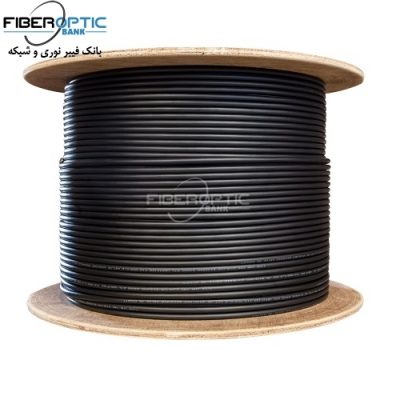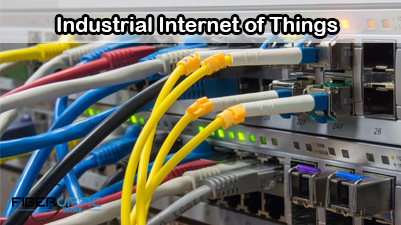4G and 5G Different
5G is the newest mobile network that’s replacing 4G technology by providing a number of improvements in speed, coverage, and reliability.
Why 5G?
The primary focus and reason for needing an upgraded network is to support the growing number of devices that demand internet access, many of them requiring so much bandwidth to function normally that 4G simply doesn’t cut it anymore.
For reference, consider how long we’ve been using 4G; the first publicly available 4G network launched in 2009. Networks these days (as of late 2021) carry around 300 times more traffic than they did in 2011.
5G uses different kinds of antennas, operates on different radio spectrum frequencies, connects many more devices to the internet, minimizes delays, and delivers ultrafast speeds.
5G Works Differently Than 4G
A new type of mobile network wouldn’t be new if it wasn’t, in some way, fundamentally different from existing ones. One underlying difference is 5G’s use of unique radio frequencies to achieve what 4G networks cannot.
These high frequencies are great for a number of reasons, one of the most important being that they support a huge capacity for fast data. Not only are they less cluttered with existing cellular data, and so can be used in the future for increasing bandwidth demands, they’re also highly directional and can be used right next to other wireless signals without causing interference.
This is very different from 4G towers that fire data in all directions, potentially wasting both energy and power to beam radio waves at locations that aren’t even requesting access to the internet.
5G also uses shorter wavelengths, which means antennas can be much smaller than existing antennas while still providing precise directional control. Since one base station can utilize even more directional antennas, it means that 5G can support over 1,000 more devices per meter than what’s supported by 4G.
What all of this means is that 5G networks can broadcast ultrafast data to a lot more users, with high precision and little latency.
However, most of these super-high frequencies work only if there’s a clear, direct line-of-sight between the antenna and the device receiving the signal. What’s more is that some of these high frequencies are easily absorbed by humidity, rain, and other objects, meaning that they don’t travel as far.
It’s for these reasons that a strong 5G connection right where you are could dwindle down to 4G speeds when you walk just a few feet away. One way this is being dealt with is by using strategically placed antennas, either tiny ones in specific rooms or buildings that need them, or large ones positioned throughout a city.
As 5G expands, there’s a need for many repeating stations to push the radio waves as far as possible to provide long-range 5G support.
Another difference between 5G and 4G is that newer networks can more easily understand the type of data being requested, and are able to switch into a lower power mode when not in use or when supplying low rates to specific devices, but then switch to a higher-powered mode for things like HD video streaming. In fact, according to some research, 5G is as much as 90 percent more energy efficient than older networks like 4G.
5G Is a Lot Faster Than 4G
Bandwidth refers to the amount of data that can be moved (uploaded or downloaded) through a network over a given time. This means under ideal conditions when there are very few if any other devices or interferences to affect the speed, a device could theoretically experience what’s known as peak speeds.
From a peak speed perspective, 5G is 20 times faster than 4G. This means that during the time it took to download just one piece of data with 4G (like a movie), the same could have been downloaded 20 times over a 5G network. Looking at it another way: you could download close to 10 movies before 4G could deliver even the first half of one!
5G has a minimum peak download speed of 20 Gbps while 4G sits at just 1 Gbps. These numbers refer to devices that aren’t moving, like in a fixed wireless access (FWA) setup, where there’s a direct wireless connection between the cell tower and the user’s device. Speeds vary once you start moving, like in a car or train.
However, these aren’t usually referred to as the “normal” speeds that devices experience, since there are often many factors that affect bandwidth. Instead, it’s more important to look at the realistic speeds, or the average measured bandwidth.
5G coverage is growing constantly, but most people probably still don’t have 5G-level access all the time, so it’s unfair to comment on repeated real-world experiences. That said, some reports show everyday download speeds of 100 Mbps, at a minimum (Verizon’s at-home 5G service delivers data at 300 Mbps up to 1 Gbps).
What Can 5G Do That 4G Can’t?
Given the stark differences in how they perform, it’s clear that 5G is paving a new road to the future for mobile devices and communication, but what does that really mean for you?
This next-gen network still lets you send text messages, make phone calls, browse the internet, and stream videos. In fact, nothing you currently do on your phone, with regard to the internet, is taken away when you’re on 5G—they’re just improved.
Websites load faster, online multiplayer games don’t lag as much, there’s smooth and realistic video when using FaceTime, etc.
5G is so fast that everything you do on the internet now that seems relatively quick could appear to be instant.
If you use 5G at home to replace your cable, you’ll find that you can connect more of your devices to the internet at the same time without bandwidth issues. Some home internet connections are so slow that they simply don’t support all the new interconnected tech coming out these days.
5G at home lets you connect your smartphone, wireless thermostat, video game console, smart locks, virtual reality headset, wireless security cameras, tablet, and laptop all to the same router without worrying that they’ll stop working when they’re all on at the same time.
Where 4G fails at providing all the data needs to a growing number of mobile devices, 5G opens the airwaves for more internet-enabled tech like smart traffic lights, wireless sensors, mobile wearables, and car-to-car communication.
Vehicles that receive GPS data and other instructions that help them navigate the road, like software updates or traffic alerts and other real-time data, require fast internet to always be on top—it isn’t realistic to think that all of this could be supported by 4G networks.
Since 5G can carry data so much quicker than 4G networks, it isn’t out of the realm of possibility to expect to see more raw, uncompressed data transfers one day. This means even quicker access to information, since it doesn’t need to be uncompressed before being used.
Where Is 5G Available?
You can’t yet use all types of 5G networks everywhere you go (like you probably can with 4G) because the rollout is an ongoing process. You can get connected to the faster type in most heavily populated areas, but only the slower kind (or none at all) in most parts of cities or rural communities. This means, even if you have a 5G phone, there are huge areas where you can’t get next-gen-level service.
The release date for 5G isn’t set in stone for every provider or country, but many have been providing it for a few years now and will continue to expand their networks into the future, even as newer technologies, like 6G, make their presence. Some companies are instead using private 5G networks in factories and other non-public areas.
Source: lifewire
Related products...
Network Cable
Network Cable
Network Cable














[ratings]